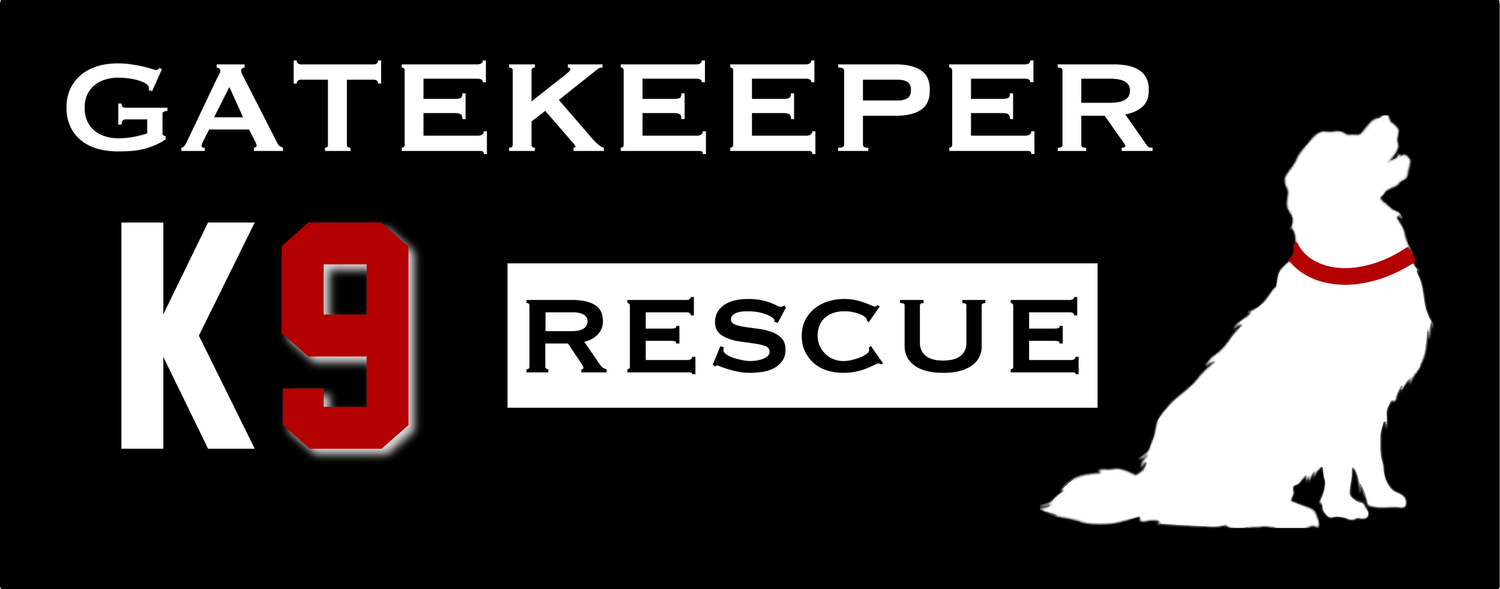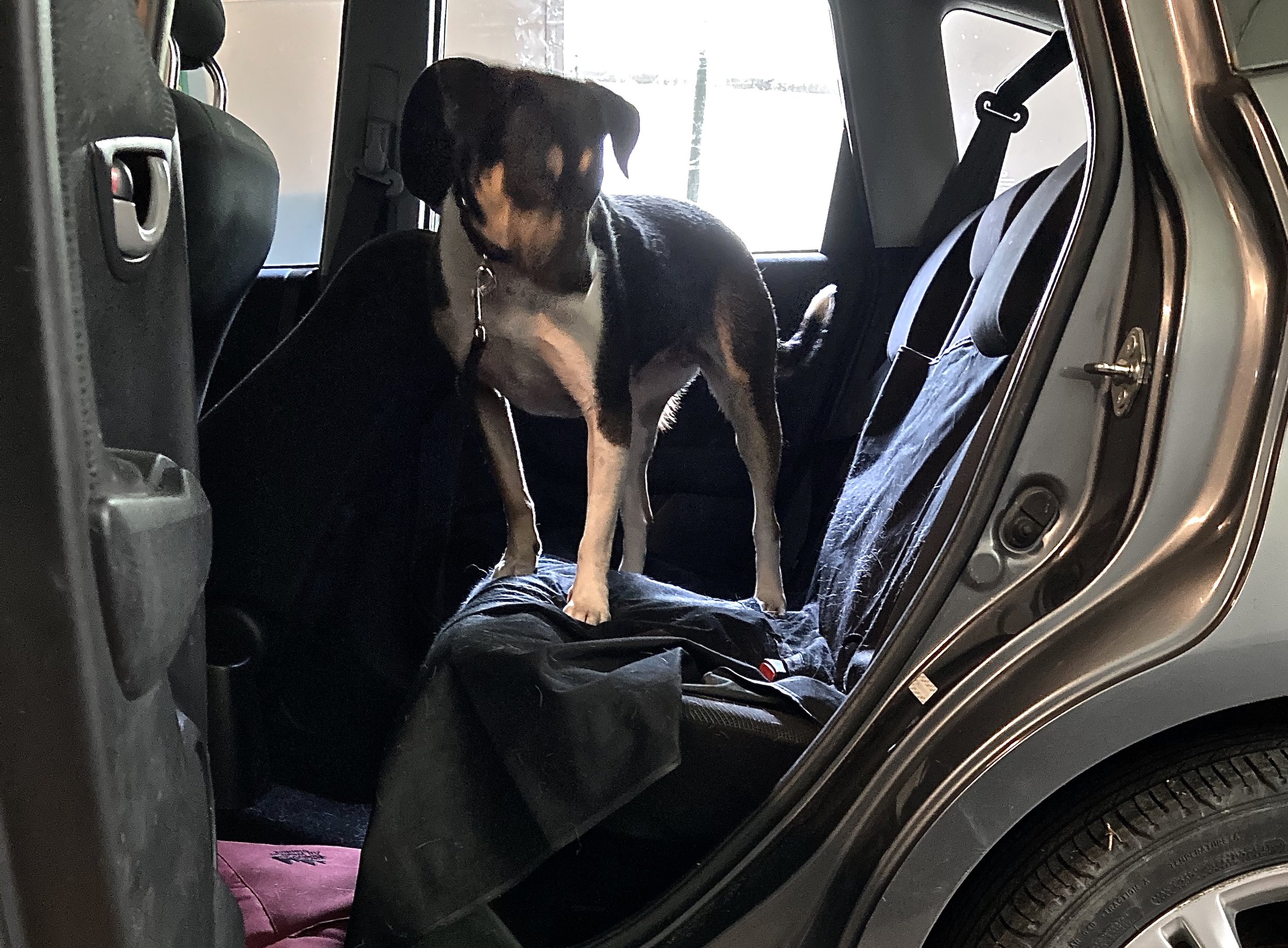Bringing Home Your New Dog
New Places and People Can Be Scary for Dogs
Getting a new dog is an exciting and joyful time. But for your dog, being in an unfamiliar place with unfamiliar people can be overwhelming. Even dogs who seem calm or friendly may panic and try to escape. Running from new, unfamiliar surroundings or people is one of the most common situations in which dogs become lost.
ASSUME YOUR NEW DOG IS SCARED AND MAY TRY TO ESCAPE.
Because of this, it's crucial to take every precaution as if they may try to run away. By following the steps below, you can help your dog transition safely and reduce the risk of them becoming lost.
Download a PDF of our Guide
Critical Safety for Your New Dog
Understand the 3-3-3 Transition Rule
The transition to a new place with new people will take some time for your dog. Most dogs experience a predictable emotional adjustment period commonly known as the 3-3-3 Rule. It breaks down into three stages: three days, three weeks, and three months.
Keep in mind that all dogs are different - some may transition more quickly while others may take longer. Be patient and supportive and let your dog go at their own pace.
3 days
Your dog may feel overwhelmed and shut down. They might not eat, drink, or interact with anyone. It’s not uncommon for them to hide or retreat to enclosed spaces. Keep interaction minimal and allow them to decompress on their own terms.
3 weeks
Many dogs begin to understand routines and feel more familiar with their surroundings. They may start to relax but can still be easily startled. Escape precautions are still essential.
3 months
Most dogs begin to bond with their new family and show more of their personality. Trust is building, but vigilance must continue. Any dog can run if frightened or overwhelmed.
Pre-Pickup Safety Checklist
Before your new dog arrives, make sure your home and yard are secure by doing the following:
Check Outdoor Fencing
Walk your fenced yard and check for any escape routes.
Make sure there are no gaps or low spots where a dog could slip through or dig under.
Confirm gates are latched and remove any items near the fence they could use to climb out.
Even with a fenced yard, keep your dog on leash for at least the first few weeks.
Create a Safe Space to Eat
Create a quiet space away from people for your dog to eat, such as an unused room or far corner. They may feel too nervous to eat with people nearby.
Create a Safe Space
Prepare a decompression zone where they can retreat if feeling overwhelmed.
Cover your dog’s crate with a blanket, leaving the front open so that they can freely go in and out.
If your dog is not comfortable going in a crate, create a similar den-like environment by putting a blanket over a coffee or end table.
Talk to Children about Dog Safety
Make sure children understand the basics of how to prevent a dog from escaping. For instance, do not open car or house doors if the dog is not secure, keep fence gates securely closed, and always use a Martingale collar while walking or transporting the dog.
Items to Gather before Pickup
Martingale Collar
To learn more about Martingale collars and how to fit them, download a PDF of our
Martingale Collar Infographic
Sturdy Leash
Seat Belt
Crate
Transportation and Transition
Transporting Your New Dog Home
While still inside, attach the leash to your dog’s Martingale collar. If using a harness, secure it to the collar or use two leashes, one for the collar and one for the harness
Walk your dog to your car. Maintain a secure grip on the leash.
Secure your dog in the car in a crate, or attach a seat belt to your dog’s Martingale collar (or a harness connected to the Martingale collar).
Do not release your grip on the leash until the the crate door is fully closed and securely latched, or the seat belt is securely attached.
If you do not have a crate or a dog seat belt, run the car seat belt through the handle of the leash.
Transitioning Your Dog from Car to House
If you have a garage attached to your house, pull your car into the garage and securely close all garage doors.
Before opening any car doors:
Check that your dog’s seat belt is still buckled. Dogs may occasionally step on seat belt buckles and release the belt.
After opening the car door:
Attach a leash to their Martingale collar (or to a harness securely connected to their Martingale collar).
Loop the handle around your wrist for the most secure grip, or securely attach the leash to your body, such as around your waist.
Release your dog’s seat belt.
Your dog may not want to get out of the car right away. Be patient, calm, and positive. Remember that your dog may feel overwhelmed and scared.
When your dog is out of the car:
Walk them to the house and inside. This may take some time.
Maintain a secure grip on the leash until your dog is inside and the door is completely closed and securely latched.
Keep house windows closed and locked to prevent your dog from pushing a screen out and escaping.
Keeping Your Dog Comfortable and Safe at Home
Give your new dog space to decompress while they get used to their new home. Here are a few things you can do around the house to help make your new dog comfortable and keep them safe as they transition into their new home.
Keep a barrier between your dog and exterior doors.
The best option is a gate that is tall and sturdy that your dog cannot get over.
If you do not have a gate, keep your dog in a separate room when doors are opened.
Each time you bring your dog into your house, make sure the door is completely closed and securely latched before letting your dog off leash.
Even if your yard is fully fenced, keep your new dog on a leash when you take them out for at least the first three weeks.
Your yard is a new, unfamiliar place for your dog that they need to become comfortable with.
A fence will not necessarily stop a dog who wants to escape.
Always use a Martingale collar.
Slowly introduce your dog to new, unfamiliar experiences, including:
Going on walks
Running
Hiking
Boating
Meeting new people or dogs
Let your dog settle in at their own pace.
Make food available so that your dog can eat when they are ready.
Your dog may not feel comfortable eating during the day.
If you crate your dog overnight and they are not eating during the day, leave their food in the crate with them at night.
Fresh water should be available to your dog at all times.
Place things for your dog to chew on in their crate or safe space (monitor your dog while they have these things).
Chewing is one way dogs may relieve some of the anxiety that they feel from being in unfamiliar surroundings.
One great chew thing is a peanut-butter filled kong that has been frozen.
Avoid leaving them unsupervised with toys/bones that can be shredded or swallowed.
Allow your dog to come to you rather than approaching them
Forcing interaction is likely to scare your dog and make it difficult for them to feel comfortable in their new home.
As they adjust, they will become more at ease with you and more willing to approach and interact with you.
Children and New Dogs
Teach kids to respect the dog’s space. Instruct them not to pull ears or tails, not to disturb the dog while eating or chewing, and never to climb on them. Let the dog initiate interaction and allow the dog to approach the children rather than the children approaching the dog. Always supervise children around the dog.
Stay Vigilant Long Term
Once your dog seems settled, it’s easy to let your guard down — but this is often when dogs run. Continue using a Martingale collar, supervise all outdoor time, and maintain barriers between the dog and exit points.
Bringing home a new dog is more than a one-day event — it’s a gradual process that requires preparation, awareness, and patience. With these steps, you’ll help your dog feel secure and loved while reducing the risk of escape.
Visit our page
Keeping Your Dog Safe
for more essential tips on how to keep
your dog safe throughout their life.















